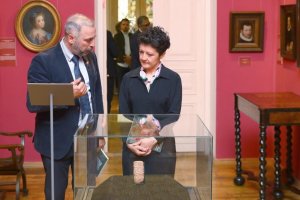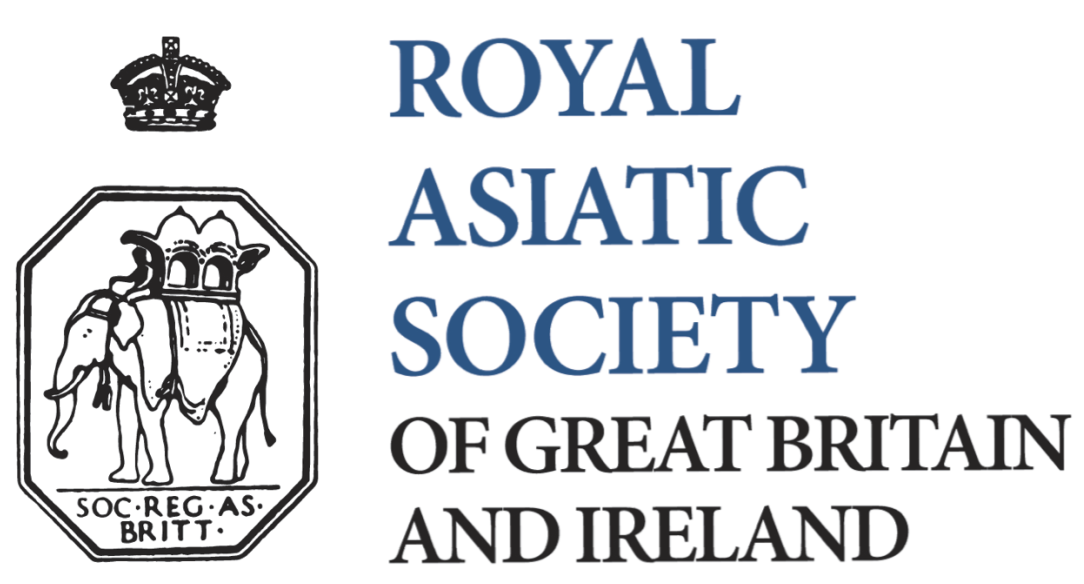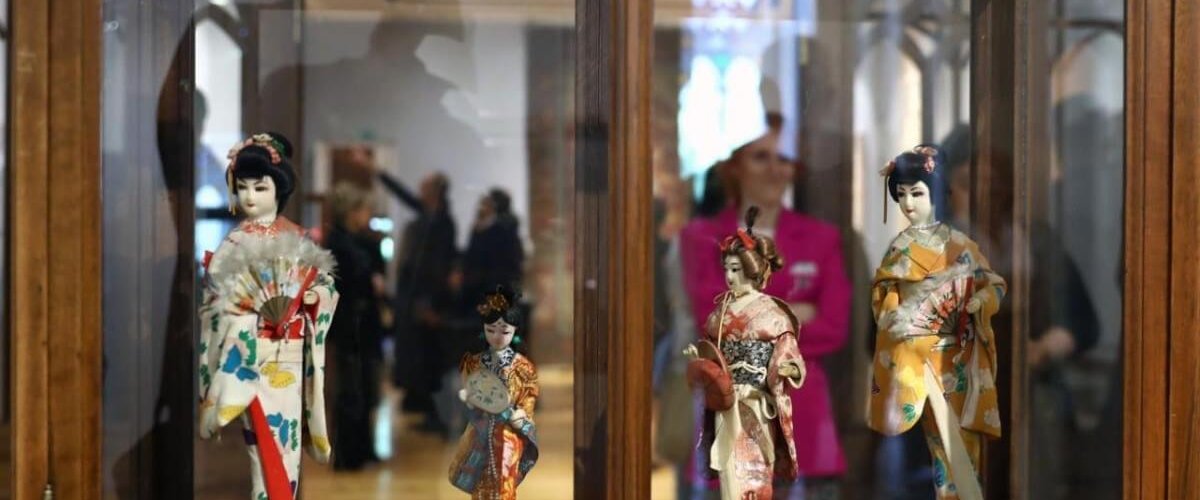Unveiling the Oriental Art Treasures: the Premiere by the Royal Asiatic Society of Georgia
This week we are delighted that the blog post has been provided by Professor Giorgi Kalandia, President, and Tamar Latsabidze, Vice-President, of the Royal Asiatic Society of Georgia. The Society was formed in 2023 with the aim to pay great attention to the study of the history of Georgia and to promote this history both domestically and internationally. They write:
The Royal Asiatic Society of Georgia has made a remarkable debut within the esteemed family of the Royal Asiatic Society by opening the Oriental Art Collection exhibition in Tbilisi. The event was accompanied by the publication of a comprehensive catalogue dedicated to the collection, ‘Oriental Collection of the Art Palace of Georgia’. The catalogue is available for viewing on the Royal Asiatic Society of Georgia’s website.
In collaboration with the Ministry of Culture, Sports, and Youth of Georgia, and the Art Palace of Georgia—officially known as the Museum of Cultural History—the RAS Georgia played a pivotal role in initiating and supporting this project. The project underlies the commitment of the Royal Asiatic Society of Georgia to serve its objectives.
As background, the collection of the Oriental masterpieces was initiated in 1927 by Davit Arsenishvili, who also served as director of the Art Palace. Arsenishvili’s dedication to curating a diverse array of Oriental art pieces set the stage for what would become one of the most comprehensive collections in the region. A notable photograph from that era shows Arsenishvili holding a Wayang, an Indonesian shadow theatre puppet, symbolising the early beginnings of the museum’s Oriental art acquisitions (see page 4 of the catalogue)

The museum’s Oriental collections continued even in the times of the Soviet Union, although without a systematic or purposeful character. A significant milestone was achieved in 2019 when the State Museum of Folk and Applied Arts was transferred to the Art Palace, bringing with it a vast array of Oriental exhibits including textiles, silver, and bronze objects. Since then, the museum has actively enriched its collections through acquisitions at auctions in Europe, Japan, and Turkey, supported by the Georgian Ministry of Culture, Sports and Youth of Georgia.

The exhibition was inaugurated in May 2024 by Professor Giorgi Kalandia, President of the Royal Asiatic Society of Georgia, alongside Ms. Thea Tsulukiani, Minister of Culture, Sport, and Youth of Georgia Since its opening, the exhibition has welcomed numerous visitors, captivating audiences with its exquisite displays. As visitors have the opportunity to explore the remarkable exhibits, they are transported to a world of beauty, mysticism, and historical significance.

The catalogue dedicated to this exhibition captivates viewers with its remarkable diversity, featuring approximately 100 artifacts from a wide array of regions, including Japan, China, Persia, India, Indonesia, Nepal, Mongolia, Uzbekistan, etc. These artifacts, ranging from textiles and furniture to jewellery and weapons, vividly reflect the rich and varied artistic traditions of their respective cultures.

One of the standout pieces in the collection is the work of an unknown artist on papier-mâché, size 37 x 56.5 cm. Although the artist remains unknown and the provenance of the piece is unclear, it presents a captivating scene. In the centre of the painting, a bearded man sits barefoot, and a peacock circles over his head. The ruler in front of the man wears the crown of the Persian Qaid. The scene is full of other figures too: soldiers, women in oriental costume, animals, birds, mythical creatures, demons and even a horned witch. There is no doubt, however, that the work belongs to Orientalist art. (See page 73 of the catalogue)

To truly appreciate the painting, let us first delve into the background. In Islam, Judaism and Christianity, King Solomon (called Suleiman in the Qur’an) is considered an example of a great ruler. For the Arabs, the biblical king is ‘The Messenger of God’, ‘Rasul Allah’. According to legends, Suleiman received four stones from the angels which he put in a magical ring. This ring helped him to rule the whole country. According to Islam, the king’s authority extended not only to humans, but also to animals, divine beings, angels and even demons. It is said in the Qur’an: ‘And we subjected Sulaiman to the wind, the movement of which is subject to his will. And of those of the devils who feel, “We tested Sulaiman and raised his corpse on the throne’ and he said – ‘O God, forgive me and give me the power, power like no one else has. And we submit to him the wind that flows according to his will, and the devils, every underworld builder and those floating in the water, and others who are in chains’. According to mythological tradition, Solomon broke the two most important rules: He had a passion for women, due to which he had numerous sultans, and a great love of horses – owning 1400 horses and employing 12 000 horsemen.The face of Suleiman has been traditionally described in similar detail as has been preserved iconographically in the item in the museum. The viewer can clearly see a large army, a group of females and various animals and demons – among them – devils, birds, reptiles and fairies. This iconic image of the biblical king is called ‘The Court of Solomon’ in Islamic art. The scene of ‘The Court of Solomon’ was also used in applied art in Iran. The papier-mâché described above seems to be part of a similar work.
In conclusion, the Oriental collections at the Art Palace of Georgia are not only artistically impressive but also culturally significant. They offer a window into the diverse and interconnected world of the East, highlighting the cross-cultural exchanges that have shaped artistic traditions over centuries. Each artifact in the collection tells a story of cultural heritage, artistic innovation, and historical continuity. Though continued efforts are crucial to expand and preserve these collections, the Royal Asiatic Society of Georgia has played a crucial role in promoting the heritage.

